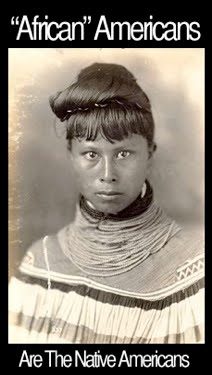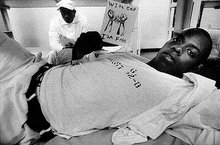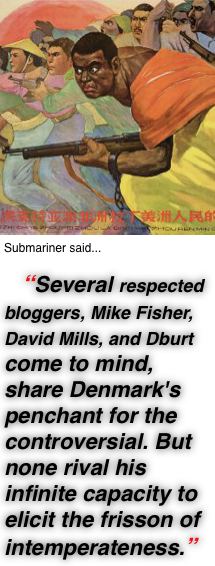


 Department of Health and Human Services Secretary Kathleen Sibelius has not only given immunity to the makers of Tamiflu and Relenza for injuries stemming from their use against swine flu, she has granted immunity to future swine flu vaccines and “any associated adjuvants”.
Department of Health and Human Services Secretary Kathleen Sibelius has not only given immunity to the makers of Tamiflu and Relenza for injuries stemming from their use against swine flu, she has granted immunity to future swine flu vaccines and “any associated adjuvants”.  The last time the government embarked on a major vaccine campaign against a new swine flu, thousands filed claims contending they suffered side effects from the shots. This time around, they will have no recourse. Today’s H1N1 “Swine Flu” is a “split-influenza” virus, Bird-flu, Pig-flu and multiple strains of human flu (H3N2) from three Continents. No one disputes that scientists genetically engineered H1NI.
The last time the government embarked on a major vaccine campaign against a new swine flu, thousands filed claims contending they suffered side effects from the shots. This time around, they will have no recourse. Today’s H1N1 “Swine Flu” is a “split-influenza” virus, Bird-flu, Pig-flu and multiple strains of human flu (H3N2) from three Continents. No one disputes that scientists genetically engineered H1NI.  While H1N1 constitutes a bio-weapon, H1N1 vaccine is also a bioweapon, one with potential to cause greater harm than the H1N1 swine flu. On April 22, 2009, CNN reported the disappearance of vials of “a potentially dangerous virus” from Fort Detrick, home of the Army's top biological research facility.
While H1N1 constitutes a bio-weapon, H1N1 vaccine is also a bioweapon, one with potential to cause greater harm than the H1N1 swine flu. On April 22, 2009, CNN reported the disappearance of vials of “a potentially dangerous virus” from Fort Detrick, home of the Army's top biological research facility.“Every major media outlet has reported the fact that US/UK bioterrorists have been manipulating the avian flu virus in university and Army labs,” writes Lori Price of Citizens for Legitimate Government. (emphasis added)
Drug companies involved
Over three years ago, Novartis applied for a patent that, in February 19, 2009, to which the U.S. Patent Office granted and issued US 20090047353A1 for a "Split Influenza Vaccine with Adjuvants.”
A year before any reported “alleged H1N1" case, Baxter applied for an H1N1 vaccine, Baxter Vaccine Patent Application US 2009/0060950A1. (See William Engdahl, Now legal immunity for swine flu vaccine makers, Global Research, July 2009)
















































































































4 comments:
Swine flu = manufactured threat to justify mandatory vaccinations
There is NO EVIDENCE WHATSOEVER THAT H1N1 was genetically engineered.
Three separate articles offer an explanation for the origin of H1N1 (Brockwell-Staats et al., 2009; Kingsford et al., 2009; Smith et al., 2009). The explanation is based on facts, including gene sequences of previously known influenza viruses. While it is possible that H1N1 was engineered, there is no direct evidence of this. The best explanation for H1N1 is a natural origin.
One virologist, Adrian Gibbs, hypothesized that H1N1 escaped from a lab. He has stated that he is uncertain of this and that it is simply a plausible hypothesis. The WHO has responded that the hypothesis does not stand to scrutiny (Hitt, 2009).
Brockwell-Staats C, Webster RG, Webby RJ. (2009) Diversity of Influenza Viruses in Swine and the Emergence of a Novel Human Pandemic Influenza A (H1N1). Influenza Other Respi Viruses. 3: 207 - 213.
[PMID: 19768134]
Hitt E. (May 14, 2009) Novel H1N1 Flu a Naturally Circulating Virus, Not From a Laboratory. Medscape Medical News.
[http://www.medscape.com/viewarticle/702862]
Kingsford C, Nagarajan N, Salzberg SL. (2009) 2009 Swine-origin influenza A (H1N1) resembles previous influenza isolates. PLoS One. 4: e6402.
[http://www.plosone.org/article/info:doi%2F10.1371%2Fjournal.pone.0006402]
Smith GJ, Vijaykrishna D, Bahl J, Lycett SJ, Worobey M, Pybus OG, Ma SK, Cheung CL, Raghwani J, Bhatt S, Peiris JS, Guan Y, Rambaut A. (2009) Origins and evolutionary genomics of 2009 swine-origin H1N1 influenza A epidemic. Nature. 459: 1122 - 1125.
[http://www.nature.com/nature/journal/v459/n7250/pdf/nature08182.pdf]
--------
A simple summary of the three articles offering an explanation for 2009/H1N1's natural origin follows.
Influenza A virus genome consists of 8 negative sense ssRNA segments: M, NA, PB1, PB2, PA, NP, NS and HA. Influenza viruses change by reassortment, which occurs when two different influenza viruses infect one cell and RNA segments are mixed. Pigs are thought to be reassortment vessels for influenza because they can be infected by swine, avian and mammalian strains (Webster et al., 1992).
Pandemic 2009/H1N1 resulted through reassortment between Eurasian swine H1N1 (ES-H1N1) and triple reassortment swine H1N2 (TRS-H1N2). The M and NA segments came from the ES-H1N1 and other 6 came from TRS-H1N2.
TRS-H1N2 has been circulating in North America since 1998. It has PB1 and NA segments from human H3N2 influenza; PA and PB2 segments from avian influenza; NP, M, NS and HA segments from classical H1N1 swine influenza. When ES-H1N1 and TRS-H1N2 reassorted, the M and NA segments from H1N1 were packaged with the six other segments from H1N2. 2009/H1N1 is this new 2+6 'package' of gene segments.
Webster RG, Bean WJ, Gorman OT, Chambers TM, Kawaoka Y. (1992) Evolution and ecology of influenza A viruses. Microbiol Rev. 56: 152 - 179.
[http://mmbr.asm.org/cgi/reprint/56/1/152.pdf]
--------
Viruses are small particles of protective protein coats, sometimes enveloped by a membrane, and inside is genetic material. In the case of influenza A virus, that genetic material is RNA (instead of DNA). The RNA in the virus is made up of eight single stranded segments of negative sense RNA (contrast this with a bacterial chromosome which is a usually a large, circular piece of double stranded DNA).
One way that influenza viruses are known to evolve is by reassortment. Reassortment occurs when two influenza viruses infect the same cell, during the packaging process, when the RNA is being packaged. The segments can mix and match during reassortment. Each virus has to have at least one of each segment (note they have names). So there are 2^8 = 256 different possible reassortments that can occur between two different influenza A strains.
2009/H1N1 is just one reassortment. The segments that were exchanged and their origins is what's explained in the three articles (2 segments from one influenza, 6 segments from the other).
"Baxter Vaccine Patent Application US 2009/0060950A1"
That patent is NOT a patent for 2009/H1N1.
The patent is a method for producing viral vaccines. In 2008, there were a few hundred patent applications relating to vaccine production. The Baxter patent describes a method for producing vaccines for viruses.
The patent says that influenza is covered by the invention. This is probably because influenza vaccines are produced and distributed every year in some countries. The patent - if you bother to read it - mentions that it can be applied to a WIDE VARIETY OF VIRAL VACCINES (NOT just influenza, NOT just influenza A H1N1 and certainly not 2009/H1N1).
In fact, this patent makes NO MENTION WHATSOEVER of 2009/H1N1. The influenza in its example is an earlier New Caledonia strain (there are many H1N1 strains known).
There is no mention of this H1N1 in that patent and the patent is about vaccines for viruses IN GENERAL, not just influenza. Further, it is one of A FEW HUNDRED vaccine related patents applied for in 2008.
YOU HAVE NO IDEA WHAT YOU ARE TALKING ABOUT.
PLEASE STOP SPREADING MISINFORMATION.
I believe very much that H1N1 is a genetically engineered triple-triple-reassortant recombinant virus, and current substrains are displaying lethal 1918 genetic characteristics.
ive got lots more on this at www.labvirus.com
cheers
Post a Comment